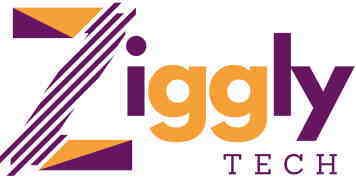Mobile Internet, fixed-line Internet, hybrid, 5G, FTTH, … do you still have your wits about you? Internet technologies are confusing at first glance. But we all know that you need a good connection to play TonyBet login.
THE DIFFERENCE BETWEEN FIXED-LINE AND MOBILE
With a fixed-line Internet connection, data is transmitted via a cable. The cable ends in your home – there you can use the signal either directly with a LAN cable or via WLAN for all your Internet-enabled devices. Fixed-line Internet is particularly stable and the bandwidth (= indicates how much data can be transmitted simultaneously) does not have to be shared with other users. For this purpose, A1 lays lines throughout Austria.
With mobile Internet, data is transmitted wirelessly via A1’s mobile network. A SIM card is required for this. These connections are not tied to your location – you can use mobile Internet anywhere in Austria, provided you have reception. Mobile Internet is generally more affected by environmental factors, structural conditions such as thick walls, radio shadows, and weather conditions than fixed-network Internet. All users in a mobile cell share bandwidth. If there are very many users in the same mobile cell, this can have an impact on Internet speed.
Mobile Internet – briefly explained
You surf the mobile Internet via the SIM card in your cell phone. The A1 Cube Internet also works via a SIM card. This SIM card is in the “Cube” that you get from A1. The cube creates a WLAN that you can log into with your Internet-enabled devices.
The signal for mobile Internet can be transmitted using different technologies: 2G, 3G, 4G, and 5G. The “G” stands for “generation.” The difference between the generations is mainly in the speed of data transmission:
UMTS (3G) makes data transfers of up to 42 Mbit/s possible.
LTE (4G) stands for “Long Term Evolution” and enables data transfer rates of up to 300 Mbit/s.
5G is the further development of this and is 100 times faster than LTE. A1 launched Austria’s largest 5G network on Jan. 25, 2020.
Internet cable
The fixed-line Internet technologies – briefly explained
At the beginning of the Internet was the copper cable (= DSL, Digital Subscriber Line). Originally intended only for telephony, today it is also used to transmit data for the Internet. Starting from the exchange, the copper cable runs through a distribution box and then on to the apartments and houses. The rule for copper cables is: the shorter the cable route, the higher the possible Internet speed.
DSL has evolved since then – ADSL, ADSL+, ADSL2 and VDSL enable even faster data transfers. The more data that can be transmitted simultaneously, the faster the Internet speeds available to A1 customers.
A1 currently uses VDSL technology (Very High Digital Subscriber Line): This involves laying fiber-optic cables up to the distribution box and copper cables from the distribution box to the apartments and houses. Vectoring is also used where available. A special process is then used on the copper cables to reduce interference. This increases the data rate that can be transmitted on copper. A1 also uses G.fast for short transmission distances: a special frequency ensures high data transmission speeds – which means that A1 customers can surf even faster.
The term FTTH is often used for lines based exclusively on optical fiber. The existing Austrian copper lines are continuously being replaced by A1 with modern fiber optic lines. There are several intermediate steps that describe to where fiber has already been laid:
FTTC – Fibre-to-the-Curb means that fiber is laid to the edge of the street.
FTTB – Fibre-to-the-Building means that optical fibre has been laid up to the building.
FTTH – Fibre-to-the-Home means that optical fiber is laid to the home.
Hybrid technology = fixed-network Internet + mobile Internet
A1 hybrid technology is a combination of 2 technologies: Fixed-line Internet and mobile Internet. An A1 hybrid modem therefore has
both a cable for fixed-line Internet and a SIM card for mobile Internet.
The fixed network Internet forms the stable basis. When you need particularly fast Internet, the hybrid modem automatically switches on the SIM card – a speed boost through mobile Internet, so to speak.

0 comments